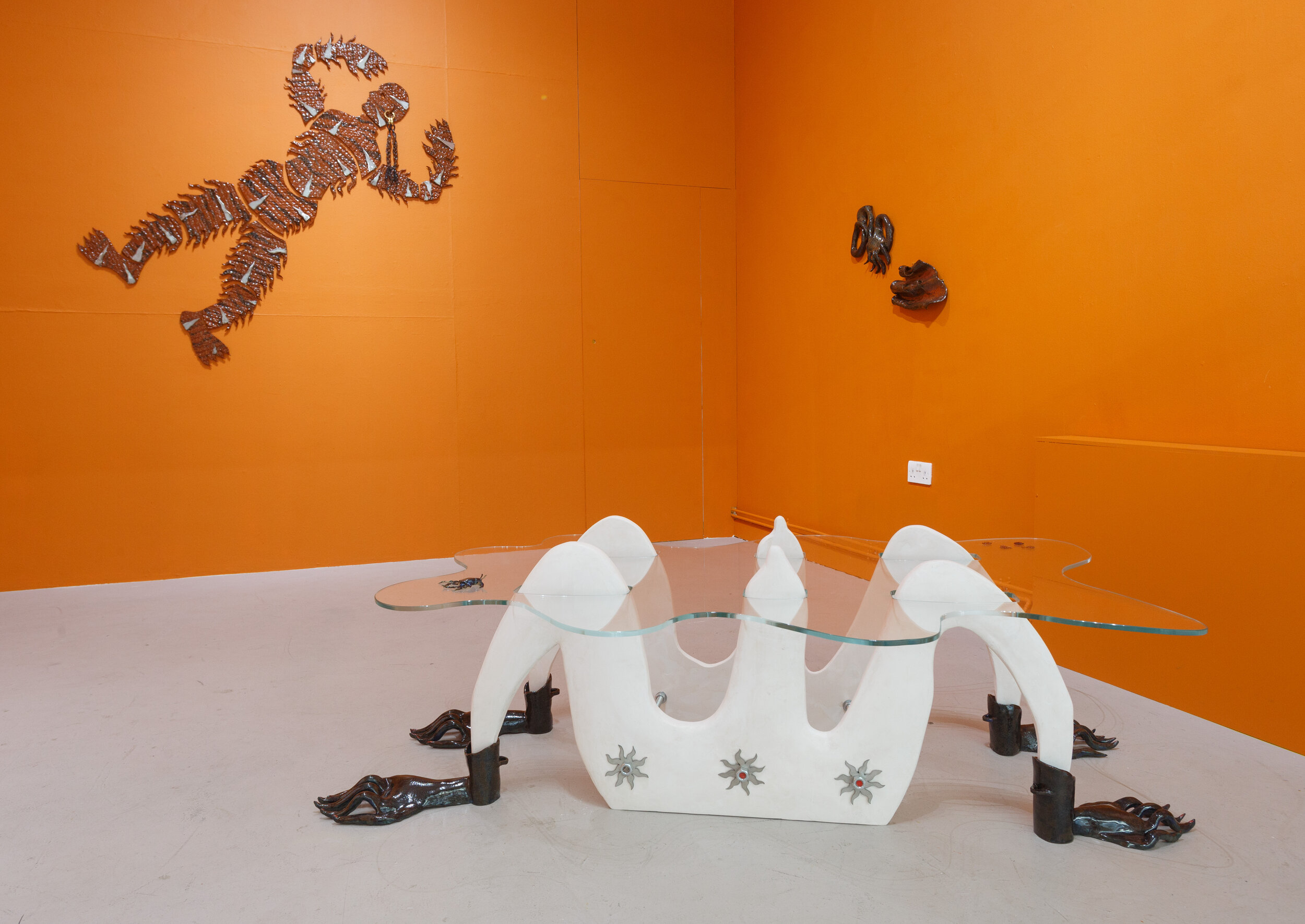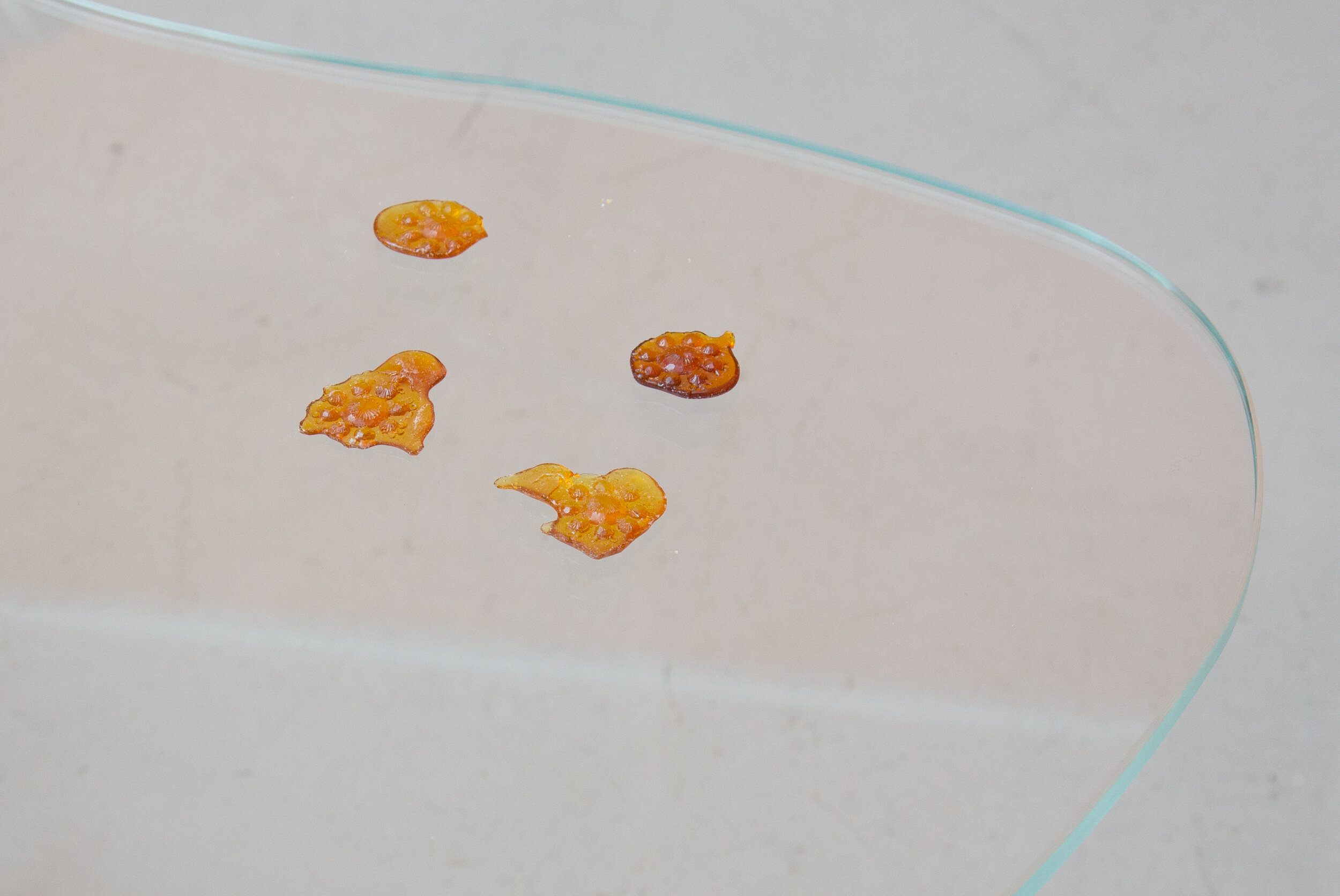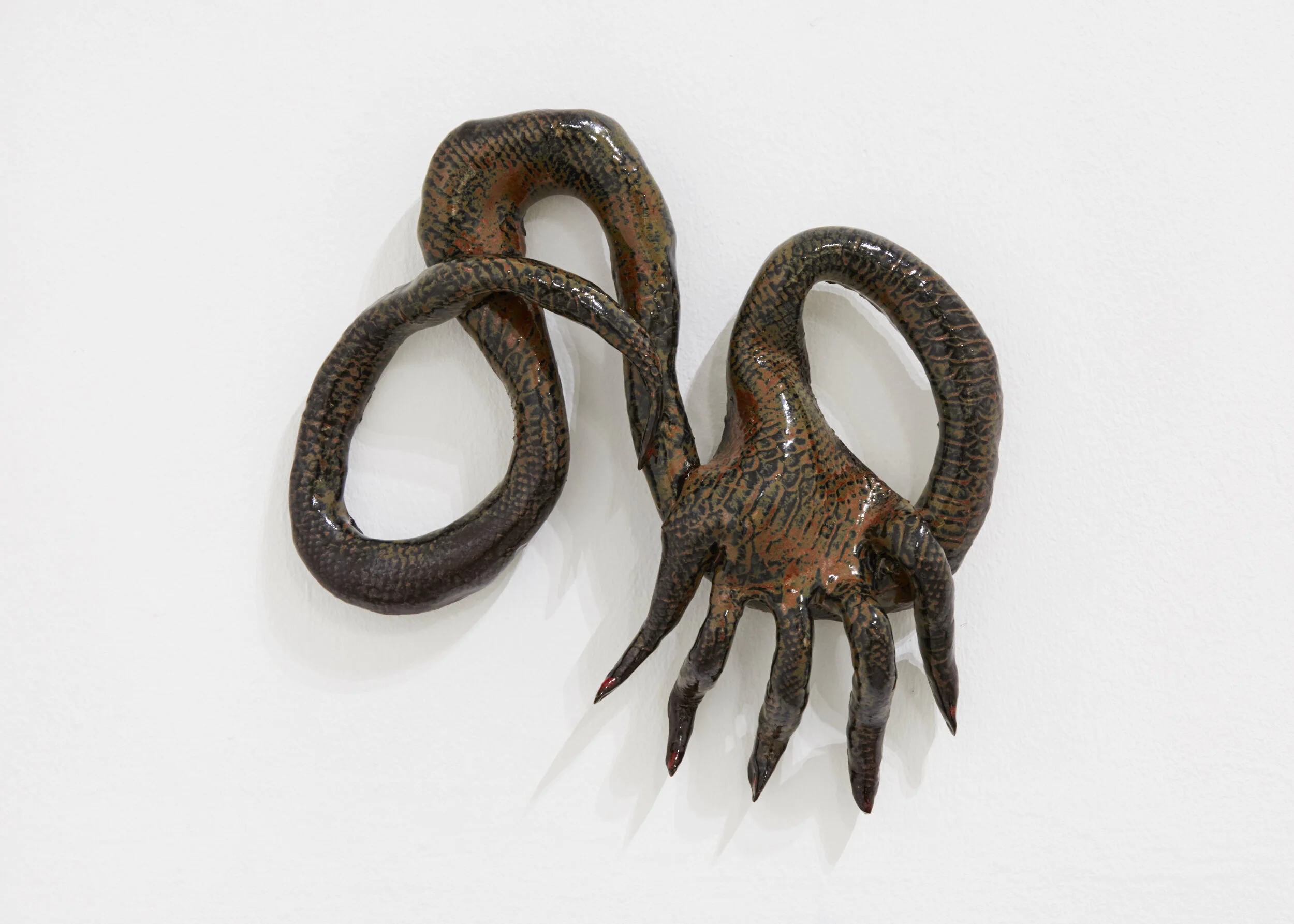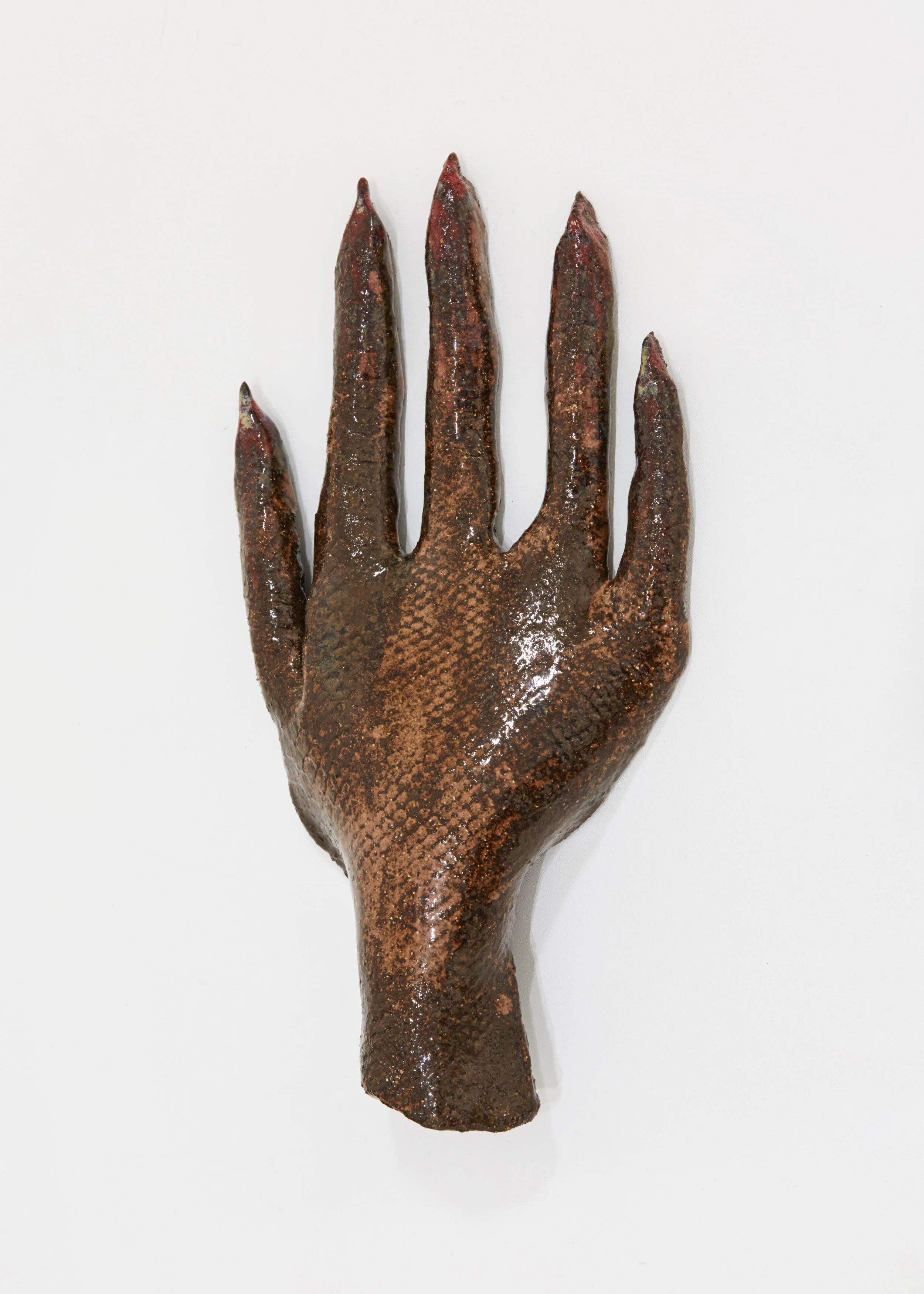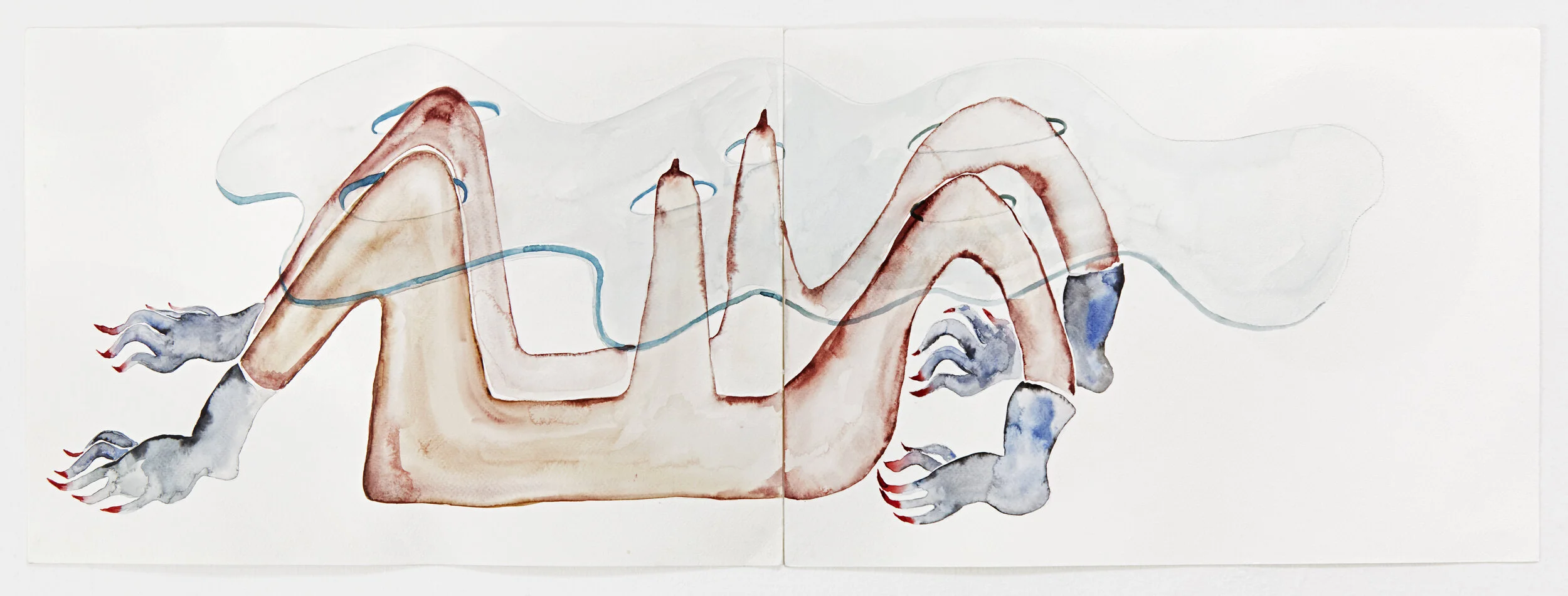Anousha Payne: and here she dwells
25 June- 1 August
indigo+madder is pleased to present Anousha Payne’s solo and here she dwells.
Anousha invites us into an intimate and enigmatic space where day-to-day objects and fantastical creatures converge. It is an alternate spiritual dreamscape, and at its centre, lies a clearing which is imagined as the maternal origin of all matter, where transformative movement from ‘becoming’ to ‘being’ happens. In this central space resides She, a mythical being inspired by creatures from Tamil folklore— half-human and half-crocodile, her knees and breasts emerging from water. Flowing out of this core, are mysterious smells, memories, stories and ancient objects. This multitude forms the surrounding layers, where ancient and modern hybrid relics regenerate, transforming from animal- to human- to thing, and carry along with them ancient myths, legends and folklore. They occupy a paradoxical space, both living and non-living; visible and invisible.
Within this sacred milieu, questions of value take on shape. How and to what do we devote ourselves? Why do some objects evoke veneration and how do we imbue them with spirituality? How do spaces facilitate transformation and new being?
- Krittika Sharma
Anousha Payne (b. 1991, Southampton) lives and works in London. She graduated from Camberwell College of Arts with a BFA in 2014. Mainly working with sculpture and painting, her preferred materials are ceramics, textile, plaster, epoxy and watercolour. Payne's work explores the human pursuit of spirituality in object form, as a mode of cultural expression that is distinct from religious symbolism. Through the process of psychic automatism and free-association, she is interested in the possibilities of imbuing spirituality into an object and in the material qualities of religious or spiritual objects and spaces. Payne explores how information is both lost and gained through the transition from drawing and painting into three-dimensional works, notably ceramic sculpture. Often deploying a reptile skin, Payne's ceramics are intended as hybrid objects, a reminder of the fluidity and shared qualities between humans, animals, the natural world and inanimate objects, questioning material hierarchies and values. This process seeks to build an aesthetic dialogue and personal visual language as a meditative interaction. A recurring theme in her work is highlighting the incongruity between ancient materiality and modern technology
Her solo exhibitions include Imaginary Artefacts, AG Projects, London, 2017; Drawing into Space, 71a Gallery, London, 2017 and Love Objects, Annin Arts via 5th Base Gallery, London, 2016. Payne’s recent exhibitions and residencies include Villa Lena, Tuscany, 2019; Fibra, Oaxaca, 2019; Disir, Kristian Day, London, 2019; Into the Soft, C4 Projects, Copenhagen, 2019; Something Else, Victoria Gallery, Samara, Russia, 2018; Papercuts by Kristian Day, Saatchi Gallery, London, 2018; Something Else, Triumph Gallery, Moscow, 2018; Wild Encounters, Guest Projects, London, 2018 and HOT MILK, Post_Institute, London, 2018 amongst others.
Download Press Release
INSTALLATION VIEWS
Your heart tastes like apples (the crocodile’s wife), 2020 with resin casts of Anousha’s grandmother’s pendant.
“All of her jewellery was stolen a year ago, the last pendant I have is cast in a scented natural tree resin called Copal.
Copal is often used in day of the dead ceremonies whilst remembering those who have passed. When burnt, it releases a heady incensed smell. The resin casts are offered for free, a sentiment of positivity in response to what was taken from us.”
The monkey and the crocodile- An ancient folktale from India.
A crocodile and a monkey sit under an apple tree, which bears fruit with the sweetest nectar you could imagine. The monkey climbs the tree and passes down apples to the crocodile every day. The crocodile’s wife wonders where he goes every afternoon. Once she finds out, she says ‘a monkey eating apples such as these must taste delicious.’ ‘bring me his heart to eat!’ The crocodile is saddened but he must obey his wife. He returns with a heavy heart and guilty conscience to the tree and tells the monkey that his wife would like to meet his new friend. The monkey comes willingly, bringing along some apples to give to his friend’s wife. They begin the journey down the river, the monkey riding on the back of the crocodile. But the crocodile cannot bear the guilt, and admits to his friend that he has taken him home to feed his heart to his wife. The clever monkey replies ‘why didn’t you say? I keep my heart in the tree’ and climbs up the tree to safety.
The work Your heart tastes like apples (the crocodile’s wife) is a depiction of the crocodile’s wife, re-imagined as evolving into a human woman (her body as bone) as she lies in wait for the monkey, her knees elbows and breasts emerge from the water.
The opposite of Allen Jones’ tables, she is not serving men but lying in wait, ready to eat their sweet apple flavoured hearts.
Shall I show you my real face? 2020, Glazed stoneware ceramic, 164 x 90 cm.
The work is inspired by a Tamil folk story about a woman who is married off to a tiger disguised as a man. Once they leave her home, he reveals his true form- a violent man-eating tiger. The woman is horrified and comes up with a plan, asking her brothers and parents for help. Eventually, they scare the tiger away and she is freed. This work re-imagines the female character, but returns the power to her; she morphs into a tiger, and is able to defend herself rather than rely on the help of her brothers.
SELECTED WORKS
“Clay as a material allows for a sense of urgency and immediacy to begin with and then it becomes a matter of waiting (slow drying process, bisque firing, doing glaze tests, glazing, then doing the second fire).”



